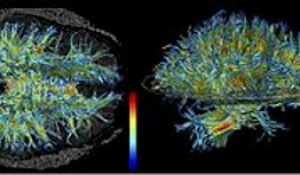Clinical Research Center Activities

On this page:
Newborn Screening
The goal is to improve outcomes of children identified with, or at risk for, Krabbe Disease. To achieve this goal, the institute established in 2006 the NYS Krabbe Consortium, a multidisciplinary group of child neurologists, geneticists, newborn screeners, neuroradiologists, transplanters and developmental pediatricians. The consortium identifies babies with positive newborn screens, places them in risk groups based on multidisciplinary standardized criteria, maintains them in long-term follow up and when appropriate refers them for possible hematopoietic cell transplantation.
The consortium has established a clinical/database registry of children with positive newborns screens/confirmatory testing located at the Clinical Center of the Institute for Myelin and Glia Exploration. Additional goals of the registry include determining which neurodiagnostic tests, mass spectrometry, mutation analysis and/or GALC activity predict outcomes and to modify mandated tests, where necessary, based on biannual review of testing results. As a result of the work of the Krabbe consortium, the NYS newborn screening program has been widely accepted as the model for screening children with Krabbe and other lysosomal disorders.
The World Wide Krabbe Registry
Another goal of the Clinical Center is to improve understanding of the natural history of Krabbe Disease including whether clinical, biochemical, genetic and/or neurodiagnostic parameters might predict phenotype. To accomplish this goal, an international registry of patients with Krabbe Disease was established in 2008. Parent questionnaires and medical records are accessed and reviewed with a focus on clinical signs and symptoms, disease course, family history and results of biochemical, genetic and neurodiagnostic studies. In order to increase the number of patients with a known genotype, mutation analysis is performed on saliva and newborn blood spots. Results are then compared with clinical course to provide genotype/phenotype correlations. In addition, MRI discs from > 70 patients are being reviewed in an effort to correlate neuroradiologic findings with phenotype and disease course.
Increase Awareness
The third goal of the Clinical Center is to increase awareness of Krabbe Disease through education in partnership initially with HUNTER's HOPE Foundation, and then with Krabbe Connect, through scientific and clinical dissemination and through addresses to state newborn screening advisory panels. The highly successful ANNUAL WORKSHOP ON KRABBE DISEASE increased awareness of the condition as well as fostered collaborations among investigators.
Clinical Care
The fourth goal of the Clinical Center is to provide clinical care for children with Krabbe Disease as well as those with positive newborn screens for the disease. A clinic was established by the Clinical Director at the Women and Children’s Hospital of Buffalo. In the future, as new therapies come on line, we anticipate having an active translational research component as part of the Clinical Center.
Clinical Research Center Members:
Thomas Langan, MD
Professor of Neurology and Pediatrics
Director of Clinical Research
Dr. Langan is a Neurologist, specializing in Pediatrics, practicing at Women and Children's Hospital in Buffalo, NY. He received his medical degree from Brown University in 1979. Medical residencies were performed at Wash University Affiliated Hospitals, Child Neurology; Barnes-Jewish Hospital-S Campus, Child Neurology; St Louis Children’s Hospital, Pediatrics. Dr. Langan has board certification in Pediatrics from American Board of Pediatrics.
Amy Barczykowski, MS

Amy Barczykowski, MS
Department of Biostatistics, University at Buffalo
Clinical Data Manager, Statistician
Ms. Barczykowski began working with Dr. Patricia K. Duffner in 2008 and Dr. Langan when he transitioned as the Clinical Director in 2012. She has experience managing large datasets containing sensitive data. As a data manager for the Population Health Observatory, she provide data management for population-based research through multiple collaborative projects. Ms. Barczykowski has worked extensively with Drs. Langan, Duffner, and Carter as a co-investigator in the development of the Krabbe Disease World Wide Registry and related research projects to study Krabbe Disease and played an integral part in the development and maintenance of the registry.

Kabir Jalal, PhD
Kabir Jalal, PhD
Department of Biostatistics, University at Buffalo
Clinical Center; Research Scientist, Biostatistician
Kabir Jalal has collaborated with Dr. Patricia K. Duffner since 2008 and with Dr. Thomas Langan since his transition to Clinical Director. As a research scientist, Dr. Jalal offers experienced statistical analysis and interpretation. He has been involved in multiple Myelin and Glia Exploration projects over the years, providing biostatistical expertise to the research efforts, and continues to participate in collaborative studies with Dr. Langan and Dr. Randy Carter. Dr. Jalal received undergraduate degrees in Computer Engineering and Mathematics, and completed his doctoral degree in Biostatistics in 2015 at the University at Buffalo.
Patricia Duffner, MD (Founder)

Patricia Duffner, MD
Professor of Neurology (Emeritus), University at Buffalo
Clinical Center, HJKRI
Dr. Patricia K. Duffner established the Clinical Center of the HJKRI in 2006 and served as Clinical Director of the Institute until January 2012. She is currently a consultant to the Institute. Dr. Duffner received her undergraduate degree from the University of Rochester in 1968, her medical degree from the University at Buffalo in 1972 and completed her residency in Pediatrics and Neurology at the Children’s Hospital of Buffalo/University at Buffalo School of Medicine program in 1978.
